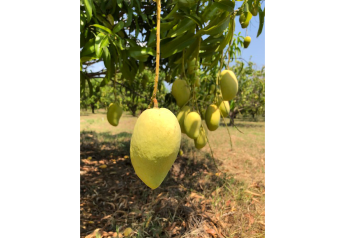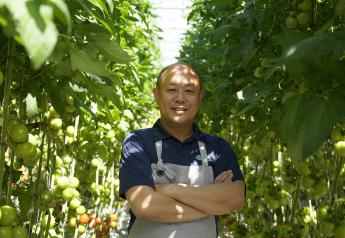Will There Be A Lettuce Shortage This Year As Parts of Drought-Plagued California Are Now Flooding?
U.S. Farm Report FJR 01/21/23 - California Flooding and Rains
After three consecutive years of drought, relentless rains have hammered California for the past three straight weeks. From flooding to mudslides, the unforgiving weather is wreaking havoc on agriculture and infrastructure in the state. The culprit? An atmospheric river. Even with the intense moisture, the rains hit ahead of the area's main growing season, which is good news for crops like lettuce and strawberries.
“One of the areas that's been hardest hit has been the Salinas Valley, which is a northward draining river that starts in southern California, drains northward through some very fertile land in central California, and then exits the northwestern coast of California,” says Brad Rippey, a meteorologist with USDA.
Livestock producers worked to get their livestock to higher ground, while produce fields in some areas flooded as levees caved to rushing waters. California is finally getting a break from the back-to-back storms, Rippey says an atmospheric river is nothing new, but it is rare during a La Niña year.
It’s been like this every day since New Year’s Day. #California #flooding #eldoradocounty #CaliforniaStorms
It’s been hard and the livestock is having a bad time as well but I’m thankful, our house almost burned down 2 years ago. This should help the drought. 🙏🏻 pic.twitter.com/7sJmPOcll7 — 🌷LIZZIE🌷 (re/formed) (@farmingandJesus) January 14, 2023
“It's something that's been going on since the beginning of time,” Rippey explains. “It’s a very concentrated area of moisture originating in the tropical Pacific, and then pointed like a fire hose at the west coast of the United States.”
Rippey says it causes a series of individual storms, and as California saw, the atmospheric river repeatedly hammers an area with intense moisture.
While the rain might eventually be good news for water allocations for growers, today, producers are wading through the damage.
“It continues to be an evolving situation where not only industry but the emergency response officials and system within the region are still assessing the ongoing nature of those impacts,” says Chris Valadez, president of the Grower-Shipper Association of Central California.
As Rippey mentioned, one of the hardest hit areas is the Salinas Valley. The flooding concerns remain along the Salinas River in Monterey County, as well as portions of Mariposa and Merced counties in the Central Valley, all of which are big growing areas. Monterey County grows 61% of the nation's leaf lettuce and 57% of the celery. The area is also home to 56% of the country’s head lettuce supply.
“This is a primary region for the production of leafy vegetables and fresh berries, namely strawberries for the U.S. consumer over the spring, summer and fall period of time,” Valadez says.
It’s not clear how long the flooding will last, but the good news is the area is in between growing seasons right now.
“We're in between seasons right now, a lot of that area is used for late winter and spring production for crops, like strawberries and lettuce crops,” Rippey explains. “Right now, a lot of the lettuce, for example, is coming out of the desert Southwest like Yuma, Arizona, so we're still a couple of months away from affecting California's production for some of those specialty crops.”
Related Story: Salinas Valley infrastructure needs a makeover: Q&A with Jim White at Growers Ice
Valadez says the last large flooding event the area had was in the mid-1990s. At that time, the rains and flooding came in March, which hammered fields already planted. As a result, the rains then did flood out many crops that year.
While flooding is never good, and infrastructure will take time to repair, Valadez says this year’s rains hit before the main growing season.
“Those crops largely aren't impacted because they're not quite yet into production. However, there are situations here were some of those crops, namely on the leafy vegetable side, were planted,” Valadez says. “I would also perceive, admittedly, there may be some acres that could have suffered so much damage they are not planted. If and where that's true, I would anticipate that being a very small percentage of the overall available productive acreage or irrigated productive acreage here in this region.”
Timing is key, but the floodwater is still sprouting doubts on when the crops will get planted.
“I believe there's confidence that as waters recede most of the acres that were impacted should get planted this year, they will be delayed,” Valadez says.
The other concern, for Rippey, is water contamination.
“Water tests will have to be done and soil testing, just to make sure it's safe to grow these crops,” he says.

Even with the recent rains, the U.S. Drought Monitor shows 92% of California is still covered in drought. The picture is improving, though. Three months ago, nearly 41% of the state was seeing D3, or extreme drought. Today, that's dropped to 32%. The significant improvement is planting hope the state is possibly turning a corner and can start to recover some of the scars left from so many years of drought and dry weather.







